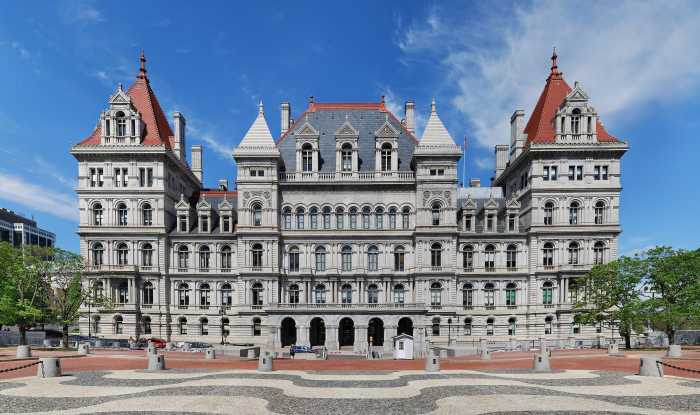
Queens Detention Center decommissioned in 2002. Building will be demolished and redeveloped for borough-based jail (Photo: Queens Post)
Oct. 14, 2019. By Shane O’Brien
The city has lowered the estimated 2026 jail population yet again and officials say that the lower number could result in smaller borough-based jails.
Mayor Bill de Blasio and City Council Speaker Corey Johnson announced Monday that the city’s jail population is expected to be about 3,300 by 2026.
New York currently has a jail population of just over 7,000 and the city had previously forecast that 4,000 people would be incarcerated by 2026. In 2017, the city anticipated that it would be detaining 5,000 inmates in 2026, at a time when the city’s jail population was around 9,400.
The mayor’s announcement comes just four days before the City Council votes on his borough-based jail plan. The plan involves closing Rikers Island and replacing it with four modern and equal-sized borough-based jails in Brooklyn, Manhattan, the Bronx and Queens by 2026.
The jail in Queens would be built in Kew Gardens and replace the decommissioned Queens House of Detention at 126-02 82nd Ave. Residents, like in other boroughs, have expressed concern about the scale of the jails.
The most recent plans called for a four jails capable of housing 1,000 inmates, but that was based on the city’s estimate jail population being at 4,000.
The Mayor and Johnson said that the new figure will serve as the baseline for the borough-based jail plan. Each facility is expected to have average daily population of fewer than 1,000 inmates.

Original plans for the Kew Gardens jail prior to latest city revisions (City Planning Commission). The new building is planned where the Queens Detention Complex is currently located
The City Council is set to vote on the mayor’s plan on Thursday as part of the Uniform Land Use Review Procedure (ULURP). The City Council Vote is essentially the last stage of the ULURP process, since the plan was passed by the City Planning Commission by a 9-3 vote.
If the city’s 2026 forecast pans out, New York would have the lowest jail population in over a century. The city would also have the smallest jail population of any major city in the United States.
De Blasio said that the revised estimate is a step toward ending mass incarceration in New York City.
“Mass incarceration did not begin in New York City, but it will end here,” de Blasio said. “With the lowest rate of incarceration of any major city, we are proving you don’t need to arrest your way to safety. New York is a telling a different story, one where we can keep fathers at home and kids in schools and still be the safest big city in America.”
Johnson said that the city would continue to reform the justice system and attempt to bring the city’s jail population down even further.
“To now reach 3,300 [inmates] is an extraordinary achievement, and the culmination of years of hard work to move away from the failed policies of mass incarceration. But we will not rest. We will keep fighting to bring this number down even further. New York City should be a model of progressive criminal justice reform nationwide,” Johnson said.

































